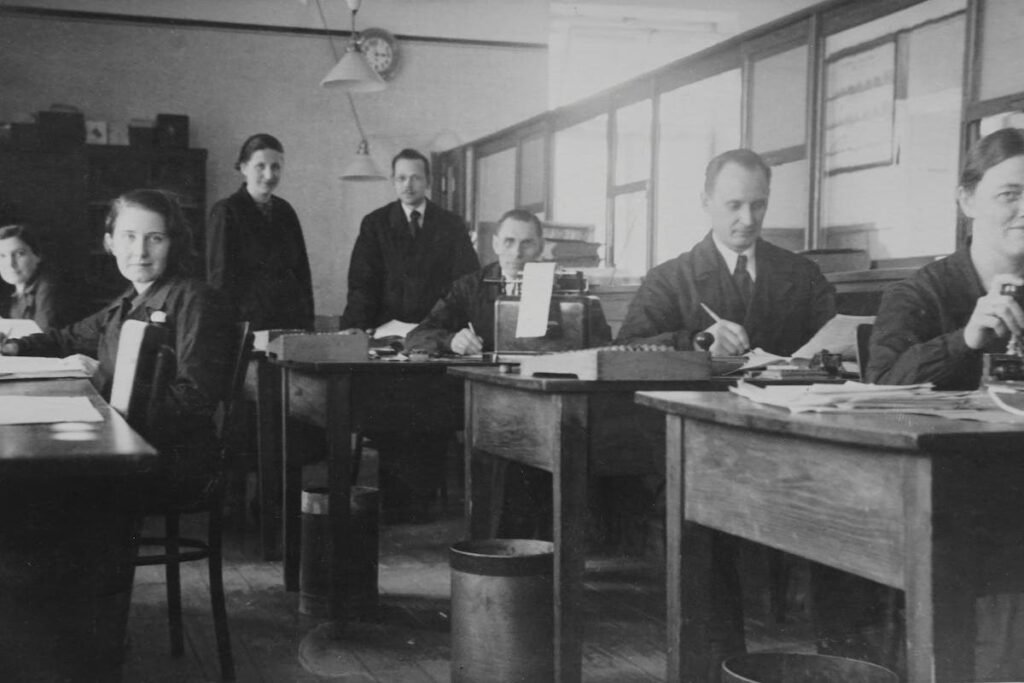Call us now:

Employment laws have evolved due to societal shifts, economic changes, and political struggles. This evolution started from the basic labor laws in the 1800s, advanced through the creation of trade unions, the significant Fair Labor Standards Act, the Civil Rights Act’s impact, and the latest challenges from the internet and gig economy. These eras have altered employment rights and affected workers and businesses. Future trends may further influence these laws. This analysis explores the history of labor law and its significant effects.
Early Labor Laws: The 1800s
The 1800s were a key period in labor laws‘ development, aiming to mitigate harsh working conditions of the Industrial Revolution. These laws significantly influenced today’s workplace, focusing on child labor and immigrant workers’ rights.
Child labor underwent considerable changes in this era. The Factory Act of 1833 banned factory work for children under nine, marking a regulatory milestone. The 1904 International Agreement further strengthened child labor laws, imposing wider restrictions on working hours and conditions for young workers.
Immigrant workers’ rights were also emphasized. The 19th-century immigration surge presented unique challenges. Laws like the 1885 Contract Labor Law were established to shield these workers from exploitation by preventing companies from importing foreign workers under binding contracts. These imperfect laws indicated initial efforts towards improving working conditions and setting up basic workers’ rights.
Trade Unions Emergence
The birth of trade unions marks a crucial turning point in labor history, signifying workers’ collective pursuit of better labor conditions and rights protection. This effort grew during the Industrial Revolution, a period characterized by harsh, unsafe working environments and low wages.
Union Legislation’s introduction played a key role in this progress, marking unions’ formal recognition and promoting their expansion and influence. This legislative action provided a legal platform for workers to negotiate with their employers, leading to the inception of Collective Bargaining. This negotiation method regulates working conditions, wages, and employment terms between employers and employee groups.
The establishment of trade unions, Union Legislation, and Collective Bargaining signifies a complex historical shift towards legally-recognized labor negotiations, altering labor market dynamics considerably. The union emergence has significantly contributed to improved working conditions and workers’ rights protection, highlighting its role in employment laws’ evolution. This labor relations advancement continues to be a foundation for fair and equitable labor practices.
The Fair Labor Standards Act
The Fair Labor Standards Act (FLSA), enacted in 1938, transformed the U.S. workplace. It introduced significant measures including a national minimum wage, ‘time-and-a-half’ overtime pay, prohibitions on most minor employment, and mandatory recordkeeping, setting the groundwork for modern employment standards.
The FLSA aimed to balance industrialization demands with worker rights, particularly for the vulnerable. It established the wage regulations and child labor framework within the U.S.
Key provisions of the FLSA include:
- A National Minimum Wage: This measure ensured a base pay level, aiming to reduce income disparities.
- Overtime Pay Regulations: Workers were entitled to ‘time-and-a-half’ pay for hours exceeding a 40-hour workweek.
- Child Labor Prohibitions: The FLSA set stringent rules against minor employment in certain industries, protecting their rights and welfare.
- Recordkeeping Requirements: Employers were required to maintain detailed records of wages and hours, fostering transparency and accountability.
The FLSA altered the direction of employment laws, advocating for a fair and just workplace.
Post-War Labor Rights
Post-war labor rights evolution was influenced by the Fair Labor Standards Act and socio-economic changes. Economic growth and middle-class expansion led to enhanced labor conditions demand. Labor strikes, exemplified by the 1946 Oakland General Strike, highlighted workers’ collective bargaining power, prompting wage, working conditions, and job security improvement. These strikes disrupted the economy, compelling labor reform enactment.
The 1947 Taft-Hartley Act, while controversial, shaped labor rights by restraining union power, establishing non-union joining rights, and balancing labor-management relations. Anti-discrimination employment laws, such as the 1964 Civil Rights Act, were introduced, protecting worker rights and fostering equitable workplaces. These developments signify the post-war era’s pivotal role in employment law evolution.
Civil Rights Act Impact
The Civil Rights Act has monumentally influenced employment laws, specifically fostering equal opportunity and combatting workplace discrimination. The Act necessitates equal treatment for employees irrespective of race, color, religion, sex, or national origin. The text delves into the Act’s impact on employment, details of equal opportunity provisions, and its approach to addressing workplace discrimination.

Act’s Influence on Employment
The Civil Rights Act significantly influenced employment laws, initiating a transformative evolution in workplace rights and obligations. Key outcomes include:
- The Act introduced equal pay and nondiscrimination, influencing future minimum wage discussions.
- Fair contractual obligations were established, preventing worker exploitation.
- The Act’s provisions expanded demographic coverage, promoting inclusive employment.
- It redefined federal government’s role in enforcing employment laws, leading to the Equal Employment Opportunity Commission.
This legislation continues shaping current employment laws.
Equal Opportunity Provisions
The Civil Rights Act significantly influenced equal opportunity provisions in employment laws, revolutionizing fairness in the American workplace. Its enactment eradicated workplace discrimination by fostering equality. This Act led to the Equal Pay Act, prohibiting gender-based wage discrimination for similar work. It also set the foundation for Workplace Harassment Prevention guidelines, safeguarding employees from discrimination based on race, color, religion, sex, or nationality. This marked a vital advancement in eliminating discriminatory practices and promoting workplace equality.
Addressing Workplace Discrimination
The Civil Rights Act, enacted to combat workplace discrimination, established legal measures for equal employee treatment, regardless of race, color, religion, sex, or nationality. Key provisions include:
- Recognition of Intersectional Discrimination: The Act identifies discrimination’s layered structure, where one can face bias based on multiple identity elements.
- Harassment Policy Implementation: It introduces strong harassment policies, reducing workplace harassment incidents.
- Mandated Preventive Measures: Employers are required to proactively prevent discrimination, encouraging an inclusive workplace.
- Legal Options for Victims: Discrimination victims are given legal avenues, empowering them to resist discrimination.
Equal Employment Opportunity Commission
The Equal Employment Opportunity Commission (EEOC) safeguards employee rights. It reflects U.S. employment law evolution by protecting against various discrimination types. The EEOC enforces laws through strategic methods to ensure equal employment opportunities.
EEOC’s Founding and Purpose
The Equal Employment Opportunity Commission (EEOC), established in 1965, enforces U.S. federal laws against job discrimination based on factors such as race, color, religion, sex, national origin, age, disability, or genetic information. Its operations are funded through federal appropriations, employer fees, and occasional special grants. Despite legislative challenges, the EEOC perseveres in its mission. The federal appropriations, detached from regulated entities, guarantee the EEOC’s independence. Employer fees supplement the EEOC’s budget, and special grants occasionally enhance its resources to address significant cases or initiatives.
EEOC’s Discrimination Protections
The EEOC, established to combat workplace bias, guarantees discrimination protections, covering areas like race, color, religion, sex, national origin, age, disability, and genetic information. It forbids employers from basing employment decisions on these factors. Violations result in remedies like reinstatement, back pay, and punitive damages. The EEOC vigorously enforces these laws and promotes preventive measures, such as internal anti-discrimination policies. Over time, these comprehensive protections have fostered an equitable work environment, marking progress in employment laws.
EEOC’s Enforcement Mechanisms
The Equal Employment Opportunity Commission (EEOC) ensures anti-discrimination compliance through investigations, mediation, litigation, and outreach programs. Specifically, it probes discrimination allegations, mediates disputes, litigates employment law violations, and educates about legal rights and obligations. These actions protect employee rights and foster equal opportunities, with particular emphasis on workplace harassment and sexual discrimination cases.
Occupational Safety and Health Act
The Occupational Safety and Health Act (OSHA), established in 1970, set rigorous standards for workplace safety and health, decreasing work-related injuries and illnesses. It addressed workplace hazards, promoting an environment for employee wellness. OSHA placed the onus on employers to maintain a safe workplace, free from known hazards causing death or serious harm. It included standards for exposure to toxic substances, mechanical dangers, unsanitary conditions, and other workplace hazards. Compliance is ensured through inspections and penalties for non-compliance.
The Act empowered employees with rights such as requesting OSHA inspection and receiving information and training about hazards and prevention. This fostered a safety-conscious culture in workplaces. OSHA’s role remains critical in the evolving industrial landscape. The Act’s continuous amendments adapt to new occupational hazards, maintaining its relevance in protecting employee wellness. OSHA, therefore, illustrates the evolution of employment laws, underlining their essential role in safeguarding worker rights and welfare.
Family and Medical Leave Act
The Family and Medical Leave Act (FMLA) of 1993, like the Occupational Safety and Health Act, enhanced worker rights, particularly in employment leave policies. The FMLA acknowledged the significance of family and medical needs within the work environment.
The FMLA’s key elements include: – A 12-week unpaid, job-protected leave each year for specified family and medical reasons – Continued group health insurance coverage during leave – Job restoration post-leave – Military Family Protections
The FMLA has significantly influenced the development of inclusive Paid Leave Policies. Its Military Family Protections provide additional support for families with military members, thus promoting work-life balance and stress reduction. This exemplifies how employment laws evolve to meet societal demands.
Americans With Disabilities Act
The Americans with Disabilities Act (ADA), enacted in 1990, mandates employers to provide reasonable accommodations to employees with disabilities, addressing Disability Accommodation Challenges. The term ‘reasonable’ interpretation varies, causing potential conflicts between employers and employees. The ADA complexity lies in its implementation due to lack of comprehensive disability list, leading to disagreements about qualification for protection. However, ADA has promoted Universal Design Benefits, fostering the creation of accessible spaces, products, and services for all. This approach not only caters to individuals with disabilities but also fosters workplace inclusivity and diversity. Despite its profound impact on employment laws, ADA still requires enhancements in certain areas for better accommodation of individuals with disabilities.
Pregnancy Discrimination Act
The Pregnancy Discrimination Act, an amendment to the Civil Rights Act of 1964, stands as a crucial employment law. Introduced in 1978, it prevents employers from discriminating on the grounds of pregnancy, childbirth, or related conditions.
Key contributions include:
- Prohibition of employment refusal due to pregnancy, provided the woman can perform major job functions.
- The requirement for employers to retain a woman’s job during pregnancy-related leave, mirroring policies for sick or disability leave.
- Insistence on employer-provided health insurance covering pregnancy-related expenses on par with other medical conditions.
- Protection from job termination or demotion due to pregnancy.
These measures safeguard women’s rights and foster inclusive workplaces.
Age Discrimination in Employment Act
The Age Discrimination in Employment Act (ADEA), enacted in 1967, protects individuals aged 40 years or older from employment age discrimination. ADEA’s influence extends to retirement policies and senior workforce treatment. The Act’s main goal was to abolish compulsory retirement based on age, demanding an update of retirement policies. The ADEA required the removal of age-based distinctions in benefits and retirement plans, promoting equality for older workers. This action revolutionized workplaces, valuing experience over youth.
Enforcing ADEA has been challenging, leading to several amendments and court rulings to reinforce its provisions. A significant amendment in 1978 increased the compulsory retirement age from 65 to 70, extending work opportunities for older workers. ADEA continues to evolve, mirroring societal changes in views on age and productivity. The Act remains critical in combating ageism, underlining the need for fair retirement policies and acknowledging the potential contributions of older workers. ADEA emphasizes that age should not determine employment suitability.
Affirmative Action Policies
Affirmative action policies, key developments in employment law, have revolutionized workforce diversity through fair opportunities promotion. Rooted in civil rights movements, these policies target historical injustices rectification by favoring underrepresented groups in hiring and promotion. Notwithstanding, debates and legal challenges surround these policies, with critics citing fairness issues and potential meritocracy compromise.
Origins of Affirmative Action
Affirmative Action, a key component in employment laws, originated during the 1960s Civil Rights Movement in the United States. Its goal was to address historical injustices and systemic discrimination suffered by marginalized groups. The policy’s development linked closely to the racial quotas debate, highlighting a need for bias reduction measures.
- The term ‘Affirmative Action’ was first introduced in Executive Order 10925, signed in 1961.
- The Civil Rights Act of 1964 outlawed employment discrimination, solidifying Affirmative Action’s basis.
- The 1970s sparked a debate on racial quotas, questioning the execution of Affirmative Action.
- Today, Affirmative Action’s evolution persists, with ongoing debates about its effectiveness and fairness.

Impact on Workplace Diversity
Affirmative Action policies have positively impacted workplace diversity. They have enhanced inclusion, allowing equal participation from various racial, ethnic, and gender groups. These policies have diversified hiring practices, ensuring wide representation in the workforce. Affirmative Action has balanced global representation, countering marginalization effects of globalization. It has mitigated the risk of a uniform workforce. The challenge is maintaining a balance between diversity and meritocracy. Equal opportunities must coexist with competence and skills. Affirmative Action redefines the employment landscape, harmonizing diversity with merit.
Controversies and Legal Challenges
Affirmative Action policies, while advancing workplace diversity, face legal challenges and controversies that obscure their positive effects. These controversies include:
- Wrongful dismissal cases, where employees assert Affirmative Action policies led to their unfair termination.
- Exploitation of legal loopholes, where employers manipulate guidelines to fill quotas instead of fostering diversity.
- Reverse discrimination claims, where people argue these policies disadvantage those outside protected groups.
- Critiques of implementation, with assertions that these policies don’t adequately address workplace discrimination roots.
Despite controversies, these policies shape diverse, inclusive workplaces.
Internet Age and Labor Laws
In the Internet Age, labor laws adapt to new workplace challenges, including digital surveillance and online harassment. Digital surveillance necessitates a balance between employee privacy and employer’s monitoring rights, prompting legal discourse. Covert monitoring technologies intensify these concerns, leading to reevaluations of existing privacy laws for digital workspaces.
Online harassment, a product of the Internet Age, has escalated as a labor law issue. Digital communication’s growth has expanded workplace harassment beyond physical boundaries, necessitating broader anti-harassment laws to include cyberbullying and online stalking. Thus, Internet Age drives substantial labor law evolution to address digital workplaces’ unique challenges.
Gig Economy and Employment Rights
The Gig Economy, a modern labor sector driven by digital platforms, transforms traditional employment landscapes and presents unique challenges for employment rights. Concerns include ‘Freelance worker protections’ and ‘Gig worker exploitation.’ Current legal frameworks primarily for standard, full-time employment, often overlook gig work’s unique intricacies.
Four complexities of gig work are: – Ambiguity in distinguishing between employee and independent contractor, affecting rights and protections. – Gig workers’ lack of collective bargaining rights, limiting negotiation for better work conditions. – Absence of standard benefits such as healthcare, retirement plans, and paid leave, increasing gig workers’ vulnerability. – Possibility of exploitation via algorithmic management, causing unfair ratings and wage theft.
To create a fair gig economy, employment laws must evolve to address these challenges effectively.
The Future of Employment Laws
The future of employment laws hinges on technological advancement’s legislative impact, unique legal challenges from the growing gig economy, and international labor laws’ influence. Each plays a vital role in shaping local employment law landscapes.
Technological Impact on Legislation
AI advancements reshape employment law landscapes, necessitating implications analysis for the future workforce. Key developments include AI Legislation and Remote Working Regulations.
AI’s workplace surge prompts new legislation requirements due to job roles shift and statutory rights re-evaluation necessity.
Revisions in remote working regulations accommodate the rise in home-based employees, addressing working hours, data privacy, and health safety issues.
Automation technologies pose ethical, legal questions regarding job displacement and income inequality.
The gig economy’s growth calls for employment status redefinition, affecting benefits and protections.
Gig Economy’s Legal Challenges
Legal challenges emerge from the gig economy’s growth and worker classification debates. Gig workers’ status, as independent contractors or benefit-eligible employees, forms the crux of the issue. Current legal frameworks inadequately address gig worker benefits, causing ambiguity and possible inequities. Resolving these legal challenges, through comprehensive, analytical approaches, is crucial to the future of employment laws and fair compensation for all workers.
International Labor Law Influence
The influence of global labor laws shapes the trajectory of domestic employment legislation. The factors include adoption of international labor standards, use of comparative labor laws as benchmarks for improvement, international labor organizations’ conventions and treaties, and the role of multinational corporations in setting worldwide employment standards. These dynamics highlight the evolution of employment law. Future trends point towards increased integration and harmonization of labor laws to meet global standards.
Frequently Asked Questions
How Have Employment Laws Influenced the Way Companies Structure Their Hiring Processes?
Employment laws influence company hiring processes by promoting discrimination prevention, regulating technology’s role in recruitment, and enforcing data privacy standards, thus ensuring fairness and equal opportunity.
In What Ways Have Employment Laws Impacted the Economy Throughout History?
Employment laws shape labor market dynamics, significantly impacting the economy. They influence economic growth by regulating wages, modifying working conditions, and resolving disputes, which affects productivity and competitiveness in businesses.
What Common Misconceptions Exist About the History and Evolution of Employment Laws?
Misconceptions about employment laws typically originate from legal misunderstandings and fact-fiction mix-ups. A prevalent myth is that these laws exclusively benefit employees, overlooking their role in safeguarding employer interests as well.
How Have Employment Laws Affected Labor Movement During the Industrial Revolution?
The industrial revolution saw employment laws significantly impact labor movements. These laws aided in union creation and acknowledged the right to strike, hence enhancing work conditions and fortifying workers’ collective bargaining power.
How Are Employment Laws Adapted to Cater to Different Industries?
Employment laws cater to various industries via tailored regulations. These consider unique hazards, working conditions, and technological effects specific to each industry. The goal is to ensure safe, fair work environments across all sectors.
